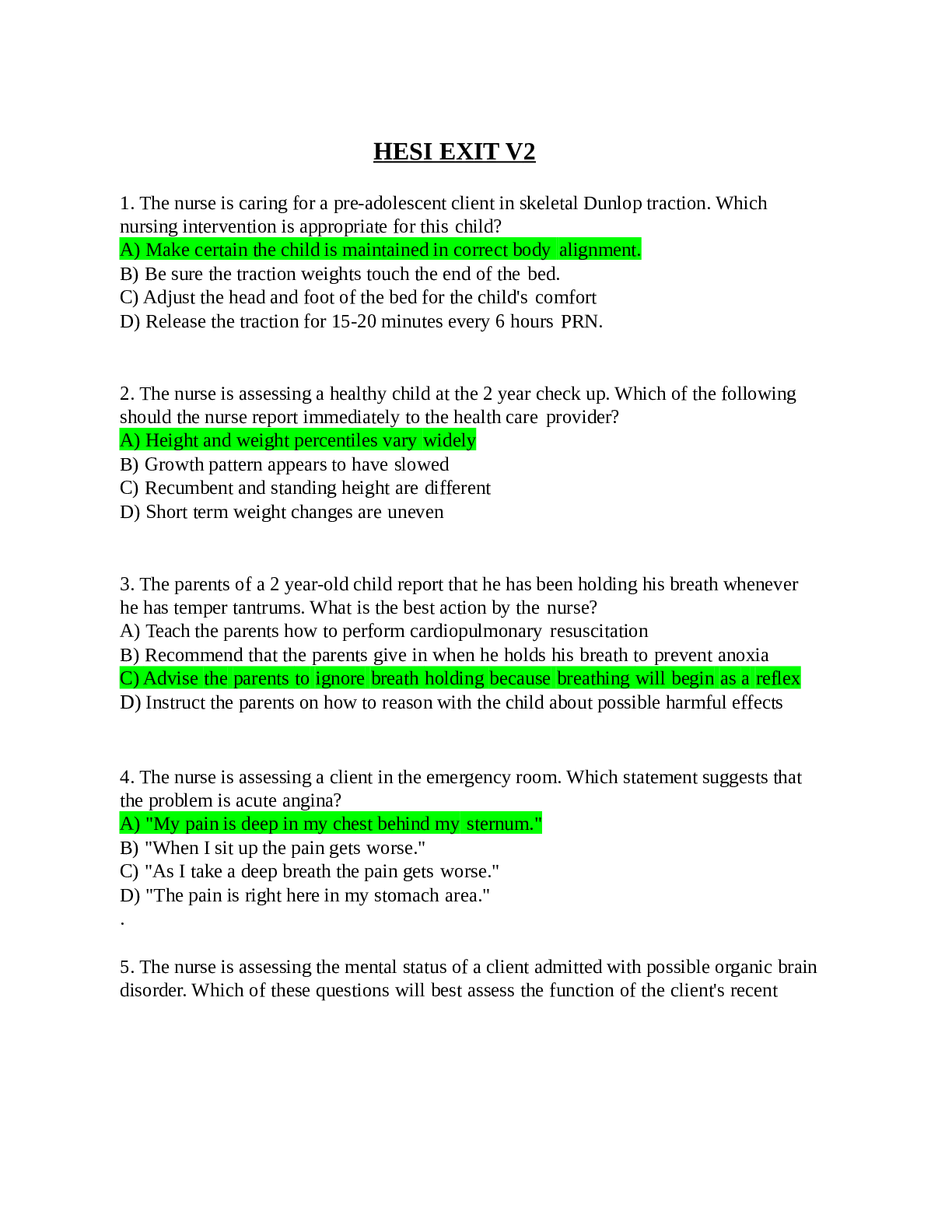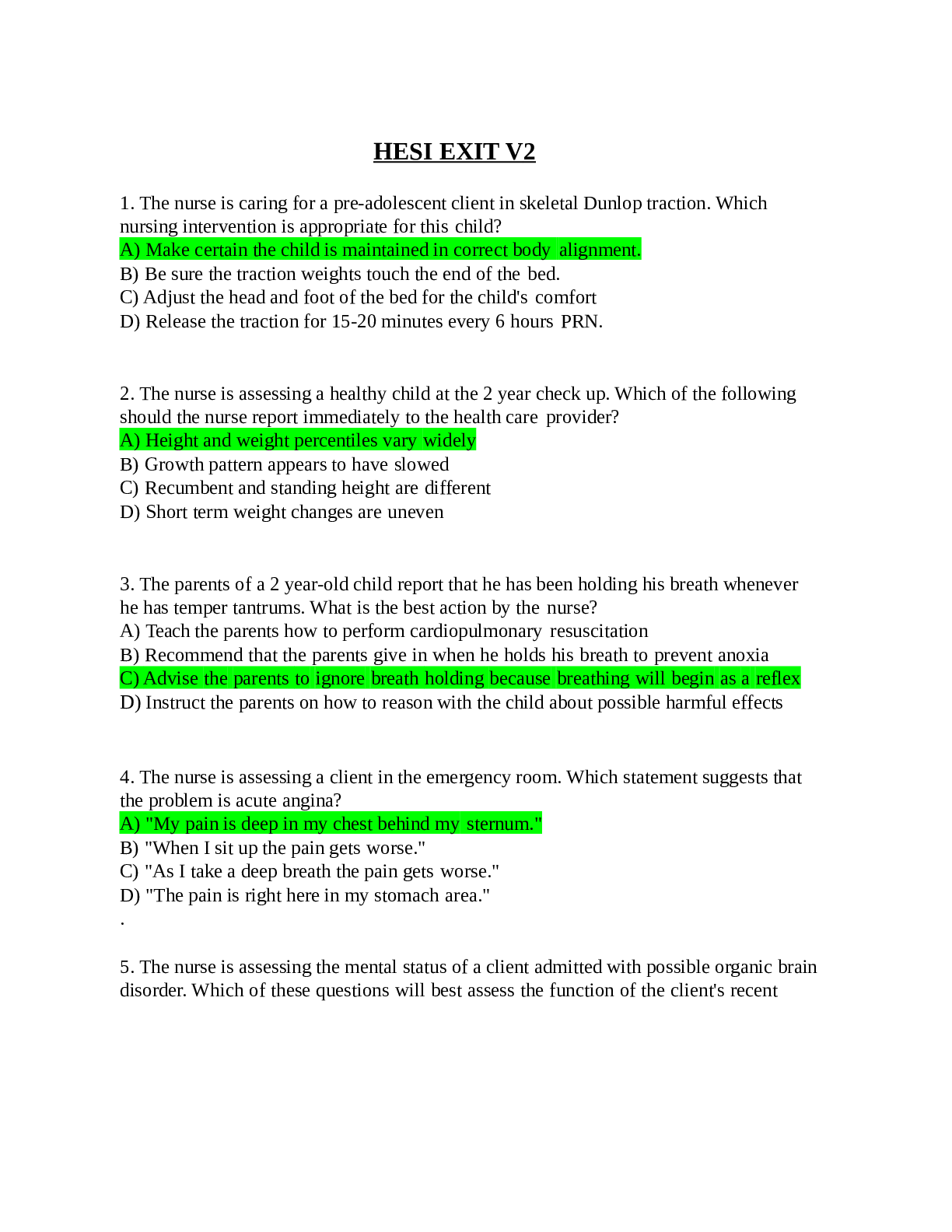HESI EXIT V2- Questions and answers
Course
Project Management
Subject
Chemistry
Category
Questions and Answers
Pages
37
Uploaded By
ATIPROS
Preview 5 out of 37 Pages


Download all 37 pages for $ 13.26
Reviews (0)
$13.26
